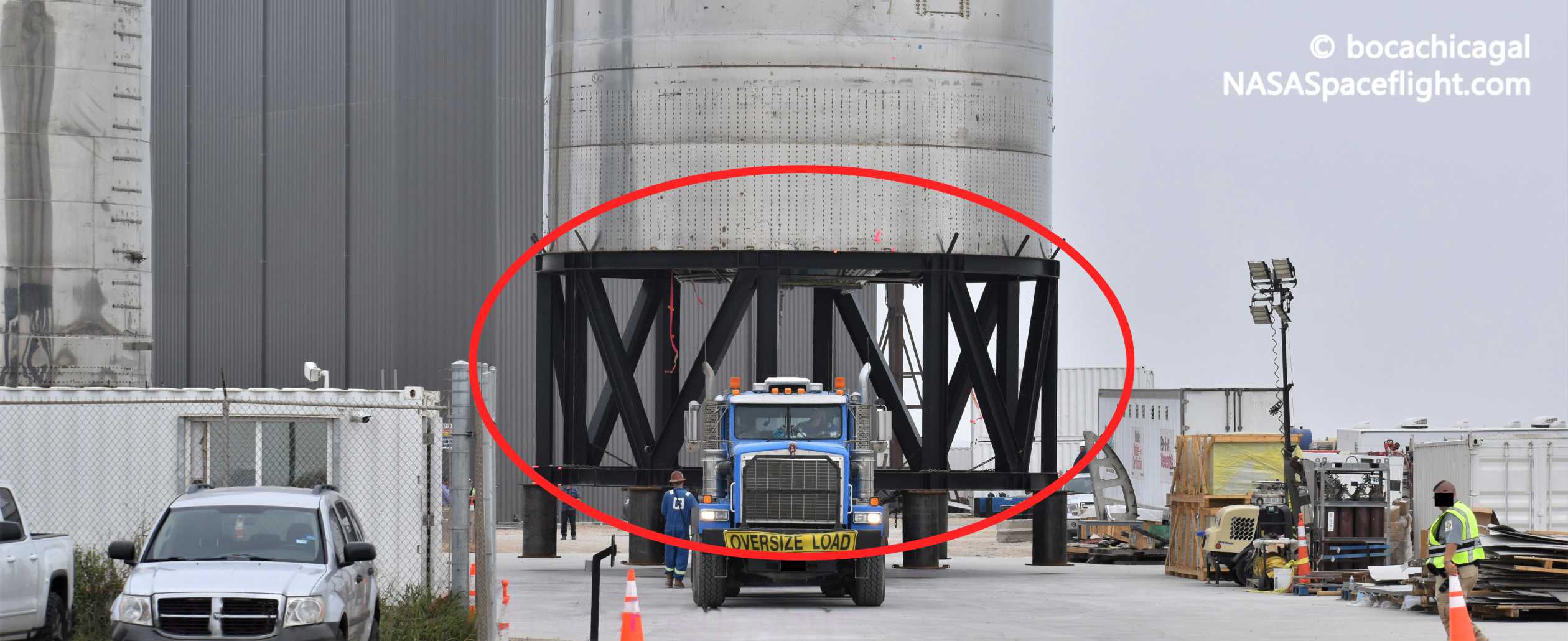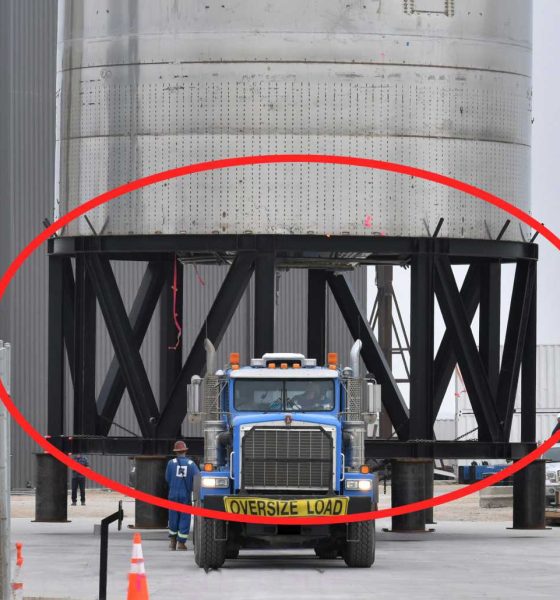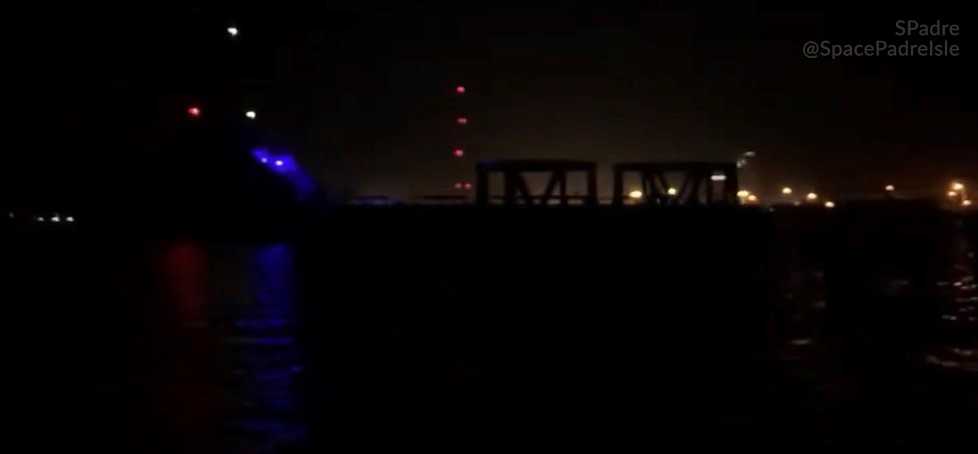

News
SpaceX Texas Starship factory accepts third Florida hardware shipment
SpaceX support ship GO Discovery has successfully completed its third trip from Florida to Texas, ferrying additional rocket production hardware to the company’s fast-expanding South Texas Starship factory.
Captured on arrival by local spaceflight fan and observer SPadre (@SpacePadreIsle), the SpaceX ship entered Port of Brownsville on March 22nd, carrying a few minor pieces of equipment that SpaceX’s Starship factory will likely find helpful down the road. The company’s South Texas presence has undergone a meteoric period of growth in the last few months, hiring hundreds to staff a Starship factory that is now churning out rocket parts on the rugged South Texas Gulf Coast.
While it’s more a question of “when” than “if” the birth of a global pandemic will come to seriously impact SpaceX’s supply chain and general operations, South Texas included, the company’s Starship factory has yet to show any signs of slowing down. Facilities expansion and Starship production continues at a breakneck pace, with the latest major construction project beginning just days ago and the company’s newest rocket prototype speeding towards completion. As such, the hardware delivered from Florida could see use in a matter of days, although SpaceX may be moving so quickly that it’s already somewhat redundant.

The stands were loaded onto GO Discovery in Port Canaveral, Florida for a March 16th departure and the ship took six days to complete its ~2100-km (1300 mi) journey to Texas. This is the third time SpaceX has shipped hardware from its Florida Starship factory – temporarily shuttered since December 2019 – to its Texas Starship factory, which continues to expand and build rockets at an incredible rate.

Just a few hours after arrival, SpaceX workers removed GO Discovery’s cargo and prepared it for transport, moving the hardware to its facilities around 12pm CDT (UTC-5). Curiously, SpaceX immediately transported two large steel stands past its Starship factory and to its launch and test facilities, situated about a mile down the road.
The company has used numerous similar stands and even completed several new ones over the last several months. The steel structures serve as work stands that offer great access and easy mobility, as well as testing mounts for several Starship tank prototypes SpaceX has tested this year. Given that SpaceX recently passed its first tank test unscathed and is in the midst of completing assembly of the third full-scale Starship prototype, it appears that the two stands shipped from Florida will populate the company’s reserves instead of immediately entering service.


SpaceX could be just a week or two away from completing its third full-scale Starship prototype and proceeding into pressure testing. If successful, the massive vehicle could become the first of its kind to attempt wet dress rehearsals (WDRs) – using real, explosive propellant – and, soon after, Raptor engine static fires.

News
Tesla FSD fleet is nearing 7 billion total miles, including 2.5 billion city miles
As can be seen on Tesla’s official FSD webpage, vehicles equipped with the system have now navigated over 6.99 billion miles.

Tesla’s Full Self-Driving (Supervised) fleet is closing in on almost 7 billion total miles driven, as per data posted by the company on its official FSD webpage.
These figures hint at the massive scale of data fueling Tesla’s rapid FSD improvements, which have been quite notable as of late.
FSD mileage milestones
As can be seen on Tesla’s official FSD webpage, vehicles equipped with the system have now navigated over 6.99 billion miles. Tesla owner and avid FSD tester Whole Mars Catalog also shared a screenshot indicating that from the nearly 7 billion miles traveled by the FSD fleet, more than 2.5 billion miles were driven inside cities.
City miles are particularly valuable for complex urban scenarios like unprotected turns, pedestrian interactions, and traffic lights. This is also the difference-maker for FSD, as only complex solutions, such as Waymo’s self-driving taxis, operate similarly on inner-city streets. And even then, incidents such as the San Francisco blackouts have proven challenging for sensor-rich vehicles like Waymos.
Tesla’s data edge
Tesla has a number of advantages in the autonomous vehicle sector, one of which is the size of its fleet and the number of vehicles training FSD on real-world roads. Tesla’s nearly 7 billion FSD miles then allow the company to roll out updates that make its vehicles behave like they are being driven by experienced drivers, even if they are operating on their own.
So notable are Tesla’s improvements to FSD that NVIDIA Director of Robotics Jim Fan, after experiencing FSD v14, noted that the system is the first AI that passes what he described as a “Physical Turing Test.”
“Despite knowing exactly how robot learning works, I still find it magical watching the steering wheel turn by itself. First it feels surreal, next it becomes routine. Then, like the smartphone, taking it away actively hurts. This is how humanity gets rewired and glued to god-like technologies,” Fan wrote in a post on X.
News
Tesla starts showing how FSD will change lives in Europe
Local officials tested the system on narrow country roads and were impressed by FSD’s smooth, human-like driving, with some calling the service a game-changer for everyday life in areas that are far from urban centers.

Tesla has launched Europe’s first public shuttle service using Full Self-Driving (Supervised) in the rural Eifelkreis Bitburg-Prüm region of Germany, demonstrating how the technology can restore independence and mobility for people who struggle with limited transport options.
Local officials tested the system on narrow country roads and were impressed by FSD’s smooth, human-like driving, with some calling the service a game-changer for everyday life in areas that are far from urban centers.
Officials see real impact on rural residents
Arzfeld Mayor Johannes Kuhl and District Administrator Andreas Kruppert personally tested the Tesla shuttle service. This allowed them to see just how well FSD navigated winding lanes and rural roads confidently. Kruppert said, “Autonomous driving sounds like science fiction to many, but we simply see here that it works totally well in rural regions too.” Kuhl, for his part, also noted that FSD “feels like a very experienced driver.”
The pilot complements the area’s “Citizen Bus” program, which provides on-demand rides for elderly residents who can no longer drive themselves. Tesla Europe shared a video of a demonstration of the service, highlighting how FSD gives people their freedom back, even in places where public transport is not as prevalent.
What the Ministry for Economic Affairs and Transport says
Rhineland-Palatinate’s Minister Daniela Schmitt supported the project, praising the collaboration that made this “first of its kind in Europe” possible. As per the ministry, the rural rollout for the service shows FSD’s potential beyond major cities, and it delivers tangible benefits like grocery runs, doctor visits, and social connections for isolated residents.
“Reliable and flexible mobility is especially vital in rural areas. With the launch of a shuttle service using self-driving vehicles (FSD supervised) by Tesla in the Eifelkreis Bitburg-Prüm, an innovative pilot project is now getting underway that complements local community bus services. It is the first project of its kind in Europe.
“The result is a real gain for rural mobility: greater accessibility, more flexibility and tangible benefits for everyday life. A strong signal for innovation, cooperation and future-oriented mobility beyond urban centers,” the ministry wrote in a LinkedIn post.
News
Tesla China quietly posts Robotaxi-related job listing
Tesla China is currently seeking a Low Voltage Electrical Engineer to work on circuit board design for the company’s autonomous vehicles.

Tesla has posted a new job listing in Shanghai explicitly tied to its Robotaxi program, fueling speculation that the company is preparing to launch its dedicated autonomous ride-hailing service in China.
As noted in the listing, Tesla China is currently seeking a Low Voltage Electrical Engineer to work on circuit board design for the company’s autonomous vehicles.
Robotaxi-specific role
The listing, which was shared on social media platform X by industry watcher @tslaming, suggested that Tesla China is looking to fill the role urgently. The job listing itself specifically mentions that the person hired for the role will be working on the Low Voltage Hardware team, which would design the circuit boards that would serve as the nervous system of the Robotaxi.
Key tasks for the role, as indicated in the job listing, include collaboration with PCB layout, firmware, mechanical, program management, and validation teams, among other responsibilities. The role is based in Shanghai.
China Robotaxi launch
China represents a massive potential market for robotaxis, with its dense urban centers and supportive policies in select cities. Tesla has limited permission to roll out FSD in the country, though despite this, its vehicles have been hailed as among the best in the market when it comes to autonomous features. So far, at least, it appears that China supports Tesla’s FSD and Robotaxi rollout.
This was hinted at in November, when Tesla brought the Cybercab to the 8th China International Import Expo (CIIE) in Shanghai, marking the first time that the autonomous two-seater was brought to the Asia-Pacific region. The vehicle, despite not having a release date in China, received a significant amount of interest among the event’s attendees.








